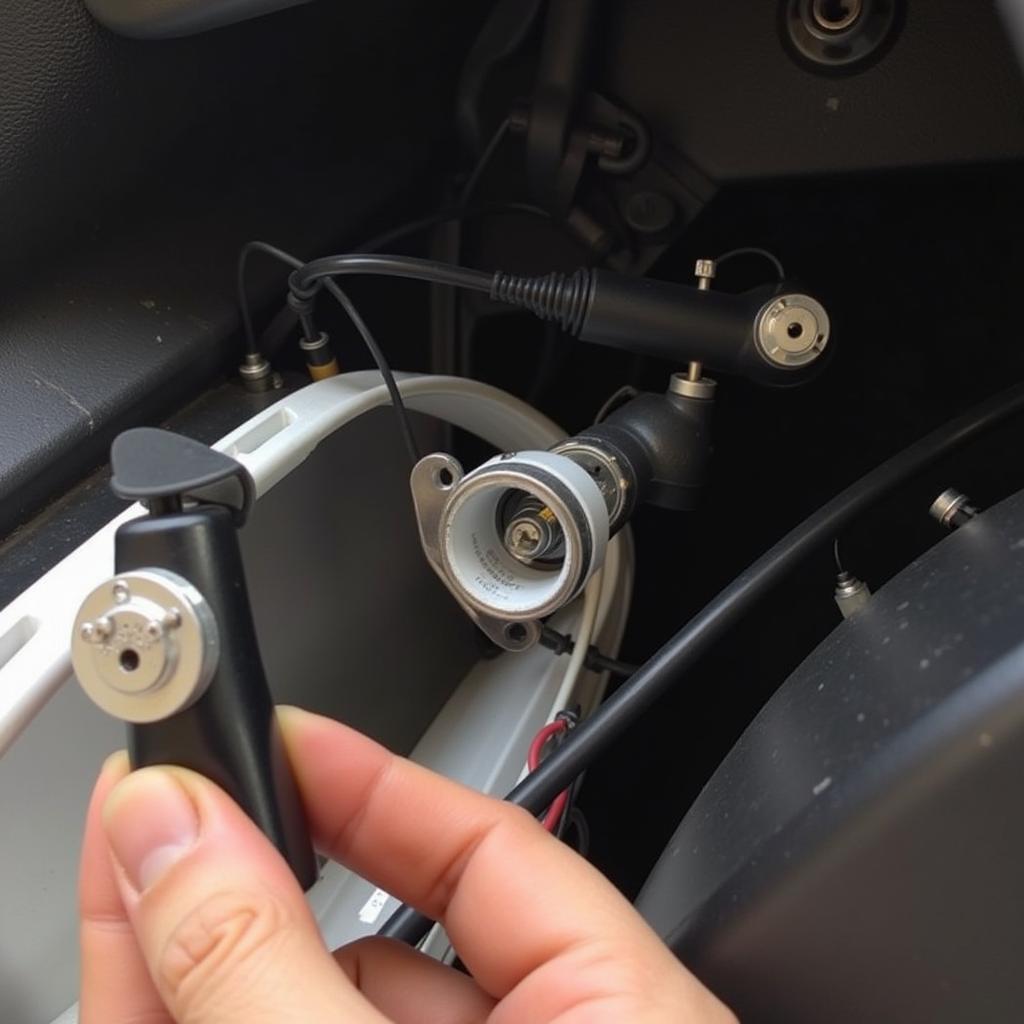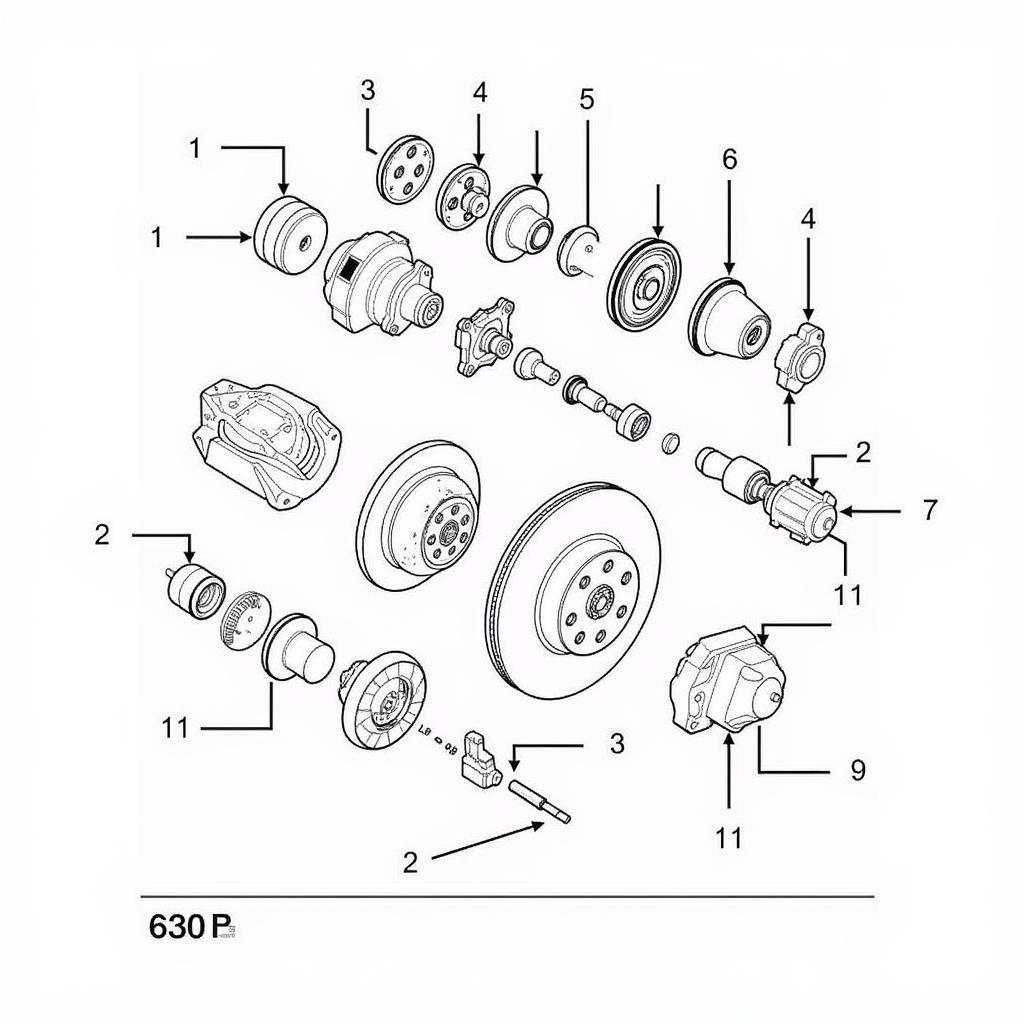The dreaded brake pad warning light on your BMW E90 can be a source of anxiety. Understanding what triggers this light and how to address the issue is crucial for maintaining your vehicle’s safety and performance. This guide provides a detailed overview of the BMW E90 brake pad warning light, covering everything from diagnosis to solutions.
If your brake warning light illuminates, it signals that your brake pads are nearing the end of their lifespan and require attention. Ignoring this warning can lead to costly repairs and compromised safety. The sensor, a small wire embedded within the brake pad, triggers the light when it makes contact with the rotor due to pad wear. It’s essential to address this promptly. For more information regarding different brake warning light situations, you might find this helpful: my brake warning light is on what does it mean.
Diagnosing the Brake Pad Warning Light
While the illuminated warning light usually indicates worn brake pads, it can sometimes be triggered by other factors. A faulty sensor, low brake fluid, or issues with the braking system itself are potential culprits.
Checking the Brake Pads
Visually inspecting your brake pads is the first step. Look through the wheel spokes for the brake pads. If the pad material is less than ¼ inch thick, it’s time for a replacement.
Inspecting the Brake Sensor
The brake pad wear sensor is a small wire embedded in the brake pad. If this wire is damaged or disconnected, it can trigger the warning light even if the pads are still good. Carefully examine the sensor for any signs of damage.
Checking Brake Fluid Levels
Low brake fluid can also trigger the warning light. Check the brake fluid reservoir and top it off if necessary. However, consistently low brake fluid could indicate a leak, which requires professional attention. You can find more information about different car brands and their brake warning light issues at brake warning light is on hundai sonana.
Replacing Brake Pads on a BMW E90
Replacing brake pads is a relatively straightforward procedure that can be done with basic tools.
- Gather your tools: You’ll need a jack, jack stands, lug wrench, socket set, and new brake pads and sensors.
- Lift the vehicle: Securely lift the car using a jack and jack stands.
- Remove the wheel: Remove the lug nuts and then the wheel.
- Retract the caliper piston: Use a C-clamp or specialized tool to compress the caliper piston.
- Remove the old pads and sensor: Unclip the old brake pads and disconnect the sensor.
- Install the new pads and sensor: Clip in the new brake pads and connect the new sensor.
- Reassemble everything: Reinstall the caliper, wheel, and lug nuts.
- Lower the vehicle: Carefully lower the car back to the ground.
It is highly recommended to have a professional inspect your brake system, especially if you are unsure about any part of the process. More information about brake warning light inspections can be found here: brake warning light is on inspection.
What if the BMW E90 Brake Pad Warning Light Stays On?
If the warning light remains illuminated after replacing the brake pads and sensor, there might be other underlying issues. This could be due to a faulty sensor, wiring problem, or an issue with the ABS system. In such cases, it is best to consult a qualified BMW technician for further diagnosis and repair. For more comprehensive information on BMW brake warning lights, you can refer to bmw brake warning light is on.
Expert Insight
“The brake pad warning light is your car’s way of telling you it needs attention. Don’t ignore it,” advises Jake Thompson, a certified BMW master technician with over 20 years of experience. “Regular maintenance and timely repairs can prevent bigger problems down the road.”
“Another common issue we see is a damaged or corroded sensor wire,” adds Maria Sanchez, a senior automotive diagnostician. “This can trigger the warning light even with new brake pads.”
Conclusion
Addressing the BMW E90 brake pad warning light promptly is essential for maintaining the safety and performance of your vehicle. Regular brake inspections and timely replacements ensure optimal braking performance and prevent more significant issues. If you encounter persistent problems, consulting a qualified technician is always recommended. Remember, a properly functioning brake system is paramount for your safety and the safety of others on the road. Don’t forget to check resources related to the emergency brake warning light switch: emergency brake warning light switch.


